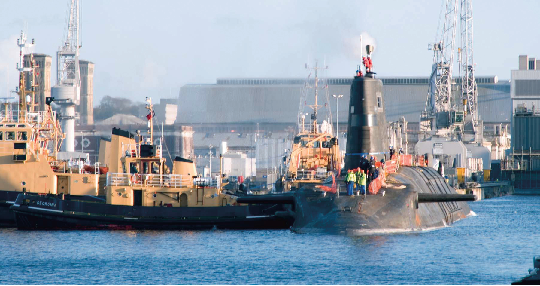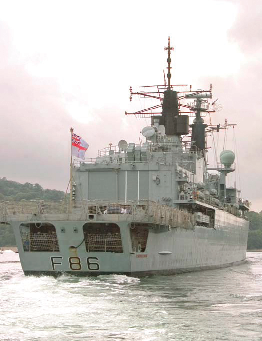Case Study: SA in the UK, Babcock Marine
 In December 2008, 4G Metrology, based in Ireland, teamed up with Babcock Marine as an SA customer and provided extensive introductory training to their personnel in early 2009. SA is currently being used at the facility in Scotland to run both Leica 1201 and Sokkia Net 05 total stations as well as handle all of the post-processing and data analysis of critical dimensional measurements. Duo-Touch® II rugged tablet PCs are used to run SA and the instruments via a Bluetooth connection.
In December 2008, 4G Metrology, based in Ireland, teamed up with Babcock Marine as an SA customer and provided extensive introductory training to their personnel in early 2009. SA is currently being used at the facility in Scotland to run both Leica 1201 and Sokkia Net 05 total stations as well as handle all of the post-processing and data analysis of critical dimensional measurements. Duo-Touch® II rugged tablet PCs are used to run SA and the instruments via a Bluetooth connection.Case Study: SA in the UK, Babcock Marine
In December 2008, 4G Metrology, based in Ireland, teamed up with Babcock Marine as an SA customer and provided extensive introductory training to their personnel in early 2009. SA is currently being used at the facility in Scotland to run both Leica 1201 and Sokkia Net 05 total stations as well as handle all of the post-processing and data analysis of critical dimensional measurements. Duo-Touch® II rugged tablet PCs are used to run SA and the instruments via a Bluetooth connection.

Alan Robertson, the Tech Lead for Babcock’s Marine Division Design Services gave a history of how Babcock got to where they are today. “Our predecessor to SpatialAnalyzer metrology software was SMX Insight. Like a lot of advanced users back in the late 1990s and early 2000s, there wasn’t much we couldn’t do with it using a laser tracker. However, as soon as we started using SpatialAnalyzer in 2003, we quickly realized its potential – to broaden the type and increase the quality of service we could offer to our customers,” Robertson said.
Due to this change in software, Babcock became able to support a whole range of new instruments. The other major change was an increased control and analysis of measurements that was far more powerful.
SA’s “Relationship Fitting soon became our new ‘Best-Fit’ friend and a whole new world was opened up. We no longer required fixed points in order to tie-in to a component,” Robertson said. And he added jokingly “It’s what we had been ‘weighting’ for.” It’s good to know engineers have a sense of humor about such serious matters.
Back to the case study: Measuring direct to the model is a great advantage. Robertson said that in the past, a set of pre-determined “hard points” would be selected and these points would need to be measured and then compared to the model. Often this was difficult as lines of sight were often obscured by scaffolding or equipment. “Now we can pick and choose what to measure on-site which allows a much more flexible approach. After a unit or block is complete, we use‘relationships’ to ‘best fit’ the built unit to the model,” he said. “This allows for comparisons with other units so we can best assemble them to the overall design. Used correctly, this software can bring big savings in time and costs by minimizing rework.”
In terms of the best uses of SA, there are a number of industries who use it. But there continue to be new areas for it to be applied to. Robertson said he sees SA’s USMN interface (Unified Spatial Metrology Network) as a very valuable function. “The ability to determine at the click of a button the uncertainties associated with a group of measurements is of great importance in large-scale projects which require high accuracy.”
His opinion is that future growth in control networks is likely due to being able to quite simply determine a “composite” set of measurements. “The composite set with associated uncertainties for a set of points measured from multiple stations is paramount moreover in the aerospace and ship-building industries.”
In conclusion, this case study proves that: “The introduction of robotic total stations controlled by SA has revolutionized the DC processes within Babcock Marine. Using SA to set out control networks (using the USMN function) means quick, accurate and reliable set ups. The time taken to measure our units and blocks for the aircraft carrier build is greatly reduced, and using SA allows the results to be immediately available on site.”
Sometimes the benefits go both ways. “In addition to their utilization of SA, the team at Babcock Marine has provided ideas for improvements and new features in the total station interface,” said Tom Fitzmaurice, of SA reseller 4G. SpatialAnalyzer’s future relies on the inherent flexibility of the product, along with great partners like Babcock Marine and reseller 4G.
Sign up to receive our eNewsletter and other product updates by clicking here.